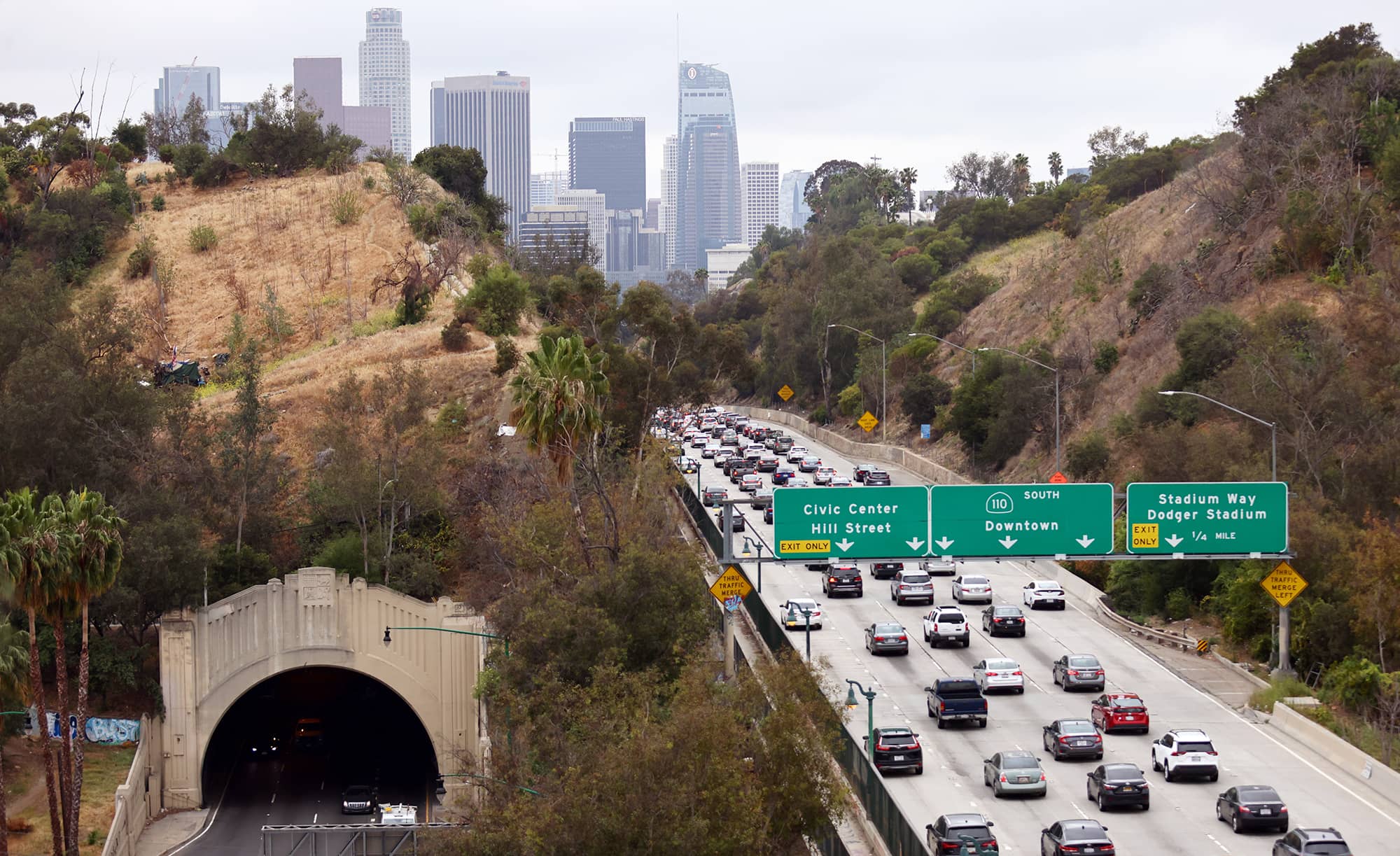California is moving full steam ahead with its plan to ban the sale of new gas-guzzling cars. On Thursday, the California Air Resources Board, the state’s chief air pollution regulator, voted overwhelmingly in favor of phasing out all sales of new fossil fuel cars in the state by 2035.
“This is a historic moment for California, for our partner states, and for the world as we set forth this path towards a zero-emission future,” Liane Randolph, chair of the air board, said in the meeting preceding the vote. The new rule will “ensure that consumers can successfully replace their traditional combustion vehicles with new or used [zero-emission vehicles] and plug-in hybrids that meet their transportation needs,” she added.
Currently, about 12 percent of all new cars sold in the state are electric vehicles. The rule requires that automakers increase that figure progressively, nearly tripling it to 35 percent by 2026 and scaling up to 100 percent by 2035. The new rule is a result of a 2020 executive order from Governor Gavin Newsom, which set a goal of 100 percent zero-emission car and truck sales within 15 years. (The requirement does not apply to used car sales.)
The announcement comes on the heels of the U.S. Congress passing a historic measure to invest nearly $370 billion in clean energy and other climate-related measures earlier this month. The new law, when combined with existing policies and economic trends, is expected to reduce U.S. carbon emissions by about 40 percent by 2030, compared to 2005 levels. The Biden administration has set a more ambitious target of cutting carbon pollution by half by 2030 and reaching net-zero emissions by 2050. California’s new rule is expected to spur electric vehicle adoption and help the country meet these goals.
The Golden State is hugely influential in the auto world. If the state were a country, it would be the tenth largest auto market on the planet. Fourteen states — mostly in the Northeast — and the District of Columbia have copied California’s low-emission vehicle mandates in the past. If the air board’s rule to ban new gas car sales receives Environmental Protection Agency approval, other states are likely to adopt similar measures.
California’s authority to set more stringent vehicle emission standards than the U.S. government has been the subject of lawsuits and political ping pong in the past. In 2019, the Trump administration revoked the state’s ability to set its own air quality standards. The Biden administration has since reinstated that authority. Automakers like Toyota and General Motors also initially challenged California’s right to set its own emissions standards, but they have more recently backed down.
At the public meeting, Steve Douglas, vice president of the car industry group Alliance of Automotive Innovation, said that the industry “is fully committed to electrification” but raised multiple questions about whether consumers — particularly those in low-income communities — will be able to afford zero-emission vehicles and conveniently charge them, as well as whether the battery supply chain is sufficient to produce the number of electric vehicles needed in such a short time.
“To ensure the success of this regulation depends on a lot more than this regulation,” he said.
A representative with Kia Corporation also said the company supports the rule, but she pointed out that complying with it will be “challenging” in part due to higher material costs, supply chain stress, and inadequate charging infrastructure. “Automakers could have significant difficulties meeting the soft target given elements outside of the control of industry,” she added.
Environmental justice groups also raised concerns about the effect of the rule on low-income communities. The rule includes incentives for automakers to sell electric vehicles at a discount in disadvantaged communities, but advocates argued that it doesn’t go far enough to make electric vehicles affordable for Californians. With the average cost of an electric vehicle hovering around $66,000, they said that Californians of color may be left behind.
“This rule had an opportunity to be transformative, but unfortunately it only does the bare minimum,” said Román Partida-López, an attorney with the Greenlining Institute, an environmental justice nonprofit based in Oakland. The equity provisions in the rule are “limited, voluntary, and do not provide any certainty that automakers will participate,” he added.
Notwithstanding the substantial upfront costs of electric vehicles, the California Air Resources Board estimates that the rule will save car owners more than $90 billion in operational costs between 2026 and 2040. Most of the savings are at the pump: The analysis assumes gas prices will hover around $4 per gallon, but the savings are even greater if prices remain at current levels or soar higher.
There are significant environmental and public health benefits, too. Taking additional gas cars off the road would eliminate the equivalent of almost 400 million metric tons of carbon dioxide emissions between 2026 and 2040, according to the agency. That’s roughly the effect of shutting down more than 100 coal plants for a year. Pollutants such as nitrous oxides and particulate matter, which lead to the formation of smog and cause respiratory disorders, are projected to decline by 70,000 tons and 4,550 tons over the 15-year period, respectively. The agency estimates that the decrease in pollution will lead to almost 1,300 fewer cardiopulmonary deaths and about 650 fewer emergency room visits for asthma.
“This rule is critical to cutting harmful pollution and will save thousands of lives and reduce asthma emergency room visits and other health emergencies throughout the state,” said Mariela Ruacho, the clean air advocacy manager at the American Lung Association in California, in an email to Grist. Ruacho said that her group’s research showed the transition to zero-emission vehicles will save thousands of lives, with Los Angeles and the San Francisco Bay Area seeing some of the biggest benefits. “This policy to accelerate zero-emissions is needed for California to meet our health-protective air quality and climate standards.”



